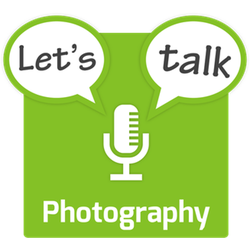- Bart Busschots (host) – @bbusschots – Flickr
Bart continues his series explaining photographic terms and phrases in this solo show all about ‘Aperture’.
While this podcast is free for you to enjoy, it’s not free for Bart to create. Please consider supporting the show by becoming a patron on Patreon.
Reminder – you can submit questions for future Q & A shows at http://lets-talk.ie/photoq
Show Outline
- In science an aperture is simply a hole in a surface.
- In photography, the aperture is the width of the opening in the lens that the light passes through on its way to the focal plane where the image is recorded (on a sensor or on a piece of film)
- Aperture is one of the three legs of the exposure triangle (along with exposure time and sensitivity, or ISO)
- On many camera systems the size of the lens aperture can be controlled, but not on all
- Smaller, simpler camera systems like those in phone cameras often have fixed apertures
- Larger systems like Micro 4/3 and (D)SLR almost universally allow control of the lens aperture
- Variable aperture is achieved with overlapping blades, and the number & shape of these blades has noticeable effects:
- Determines a lens’s bokeh
- Determines the arrangement of a lens’s diffraction spikes (sunbursts etc.)
- Aperture size is one of the factors that determines depth of field
- When light passes through an aperture it get deflected a little (Fresnel diffraction). The amount of deflection depends on the size of the aperture:
- A pinhole has effectively zero diffraction
- The bigger the aperture, the more light gets diffracted
- The more diffraction, the quicker focus falls off around the item that’s in focus
- The bigger the physical hole, the shallower the depth of field
- When light passes through an aperture it get deflected a little (Fresnel diffraction). The amount of deflection depends on the size of the aperture:
- In photography, aperture size is represented as a focal ratio or f-number, not as a radius, diameter, or circumference as you might expect
- Why?
- Physical size of aperture is meaningless across camera systems
- A 3mm aperture is tiny on a full-frame DSLR but massive on a camera phone!
- Even on the same camera, a 3mm aperture on a wide-angle lens will result in a much brighter image than a 3mm aperture on a telephoto lens
- Focal ratio is more meaningful across more camera systems
- Physical size of aperture is meaningless across camera systems
- The focal ratio is also known as the f-ratio, f-number and f-stop
- The focal ratio is usually written as f/N, e.g. f/1.4
- The focal ratio is defined as the focal length of the lens divided by the diameter of the aperture
- Because the focal ratio is a ratio it’s a dimensionless number, so you can’t mess up the units 🙂
- Notice that the bigger the aperture, the smaller the focal ratio!
- Why?
- Why would you want to control aperture from an artistic point of view?
- To control DOF
- Sometimes you want to isolate your subject by having a shallow DOF, e.g. a portrait
- Sometimes you want a really deep DOF to get a lot of things into focus, e.g. a landscape
- To let in as much light a possible in low-light extremes, e.g. astro photography
- To let in as little light as possible to make longer exposures possible, e.g. trying to blur a waterfall or clouds moving across the sky
- To control DOF

